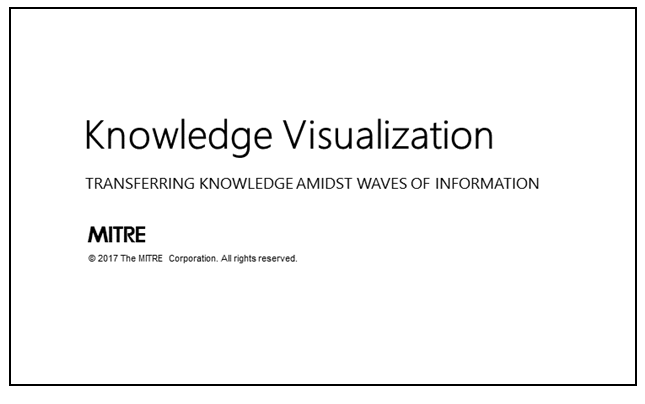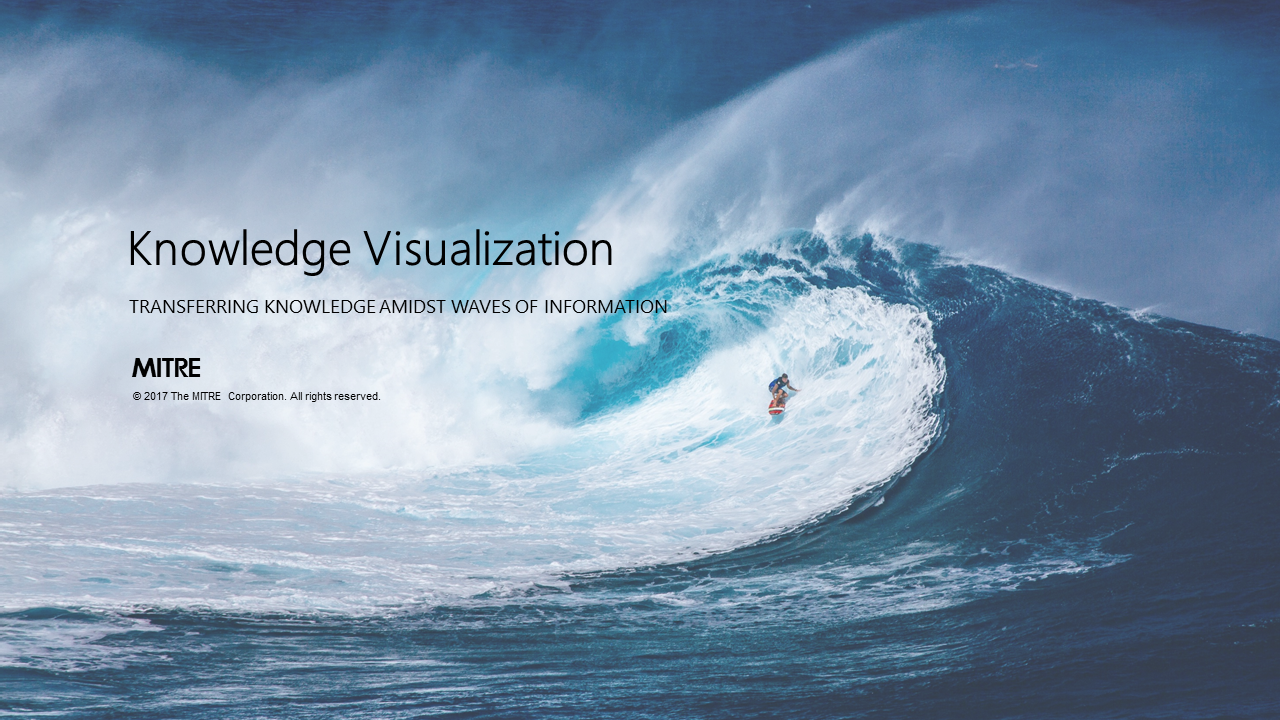Knowledge Visualization Part 2: Awakening Your Sleeping Artist

Stanford researcher Carol Dweck has explored the concepts of fixed and growth mindsets at length. Someone operating with a fixed mindset may believe that intelligence is static, whereas a person with a growth mindset is more likely to believe in his or her potential to develop and change (here’s a visualization of the differences). The authors of this post walk us through why we might want to awaken our most creative selves, grow, and develop others along the way. —Editor
Photo by Alice Achterhof on Unsplash
Authors: Diego Velasquez and Josef Kauzlarich
Our first post on knowledge visualization focused on the idea that the knowledge we generate is useless if it doesn’t transfer into the minds of people who can use it and that good messaging combined with excellent visualization can help accomplish this transfer. If we value the transfer of knowledge just as much as knowledge creation, we then put time and effort into creating the perfect delivery mechanism for that purpose.
People often seem to think they personally cannot visualize knowledge, but they can! Let’s talk about how to overcome some of objections we hear frequently from people:
I am not a creative person, so I can’t do this.
I don’t have the time to think visually or creatively.
I don’t know how to use any of those visual tools.
These are myths that you (yes, you, reading this right now) need to overcome if you want to be better at getting your ideas into the minds of other people. You are naturally creative and visual. You can find the time to think this way if you know how to integrate it into your work. You can do this with the tools you already know how to use. (Contrary to popular opinion, PowerPoint can be an incredible tool for making excellent deliverables). You can do this, and in this post, we will tell you why and give you steps for how to start.
It is high time for a mental course correction
Throughout our academic and professional careers, Josef and I had knowledge mostly presented to us in the form of books, articles, lectures, and extremely wordy PowerPoint slides. Over time we realized something: these methods are limited and primarily cater to only half of the brain—the left. The other half—for the most part—was neglected and its capacity for processing information largely left untapped.
The more we have reflected on this, the more we have been struck by how odd it is for the world we’ve personally experienced to focus so much on the left brain. As far back as high school, we can recall thinking there was no money to be made in the arts—say, as a musician or an animator—but that there was money in science, technology, engineering, and math. These thoughts, however indirect, we think came from the value western society at least places on left-brain-dominant professions over more right-brain-dominant ones.
The intense emphasis on the left brain, however, may be subject to a course correction. Daniel Pink, author of A Whole New Mind: Why Right-Brainers Will Rule the Future [1], postulates that the outsourcing of jobs, automation of left-brain functions (e.g., accounting), and the abundance of material goods are driving a demand for a U.S. workforce with more of a right-brained orientation. Pink argues that routine, left-brain work—such as programming and accounting—is being offshored or done by computers cheaper and better; and that we in the United States must do right-brain work better.
The point is that we need to get over this mindset that some people are creative and some aren’t if we are going to remain relevant and successful. You have the potential to be just as creative as others because everyone uses their creative capacities to some extent and this has been proven.
We have one brain. Not one half.
The research of psychobiologist and Nobel Prize winner, Roger W. Sperry, tells us that the left brain is connected to logic, sequencing, linear thinking, mathematics, and thinking in words. The right brain is connected to imagination, holistic thinking, intuition, arts, rhythm, nonverbal cues, and even daydreaming [2].
This doesn’t mean, however, that humans are hard-wired to be entirely one way or the other. In fact, a team of neuroscientists found no proof that humans have a dominant brain half [3, 4]. The two halves of the brain are actually highly complementary. Ann Pietrangelo, a freelance writer specializing in health-related stories, tells us that “the left brain is credited with language, but the right brain helps you understand context and tone. The left brain handles mathematical equations, but the right brain helps with comparisons and rough estimates” [2]. So, you have two hemispheres and you use them both in a complementary fashion. However, to bring your creative mental capacities to your work, you must spend time exercising them. Otherwise, they will be weak and underdeveloped.
Exercising our right-brain mental capacities
How do we wake up our drowsy inner artists, exercise our brains, and engage both hemispheres? Each person’s journey into building this skill will look different; however, we reflected on our own journeys and found we had the following things in common:
Recognition of the problem. We observed how inadequate text heavy, non-visual documents and methods are in communicating messages quickly and in an engaging way. (If you give presentations, here’s a great resource for redesigning wordy messages into visual ones. Yes, there are many, many more and we’d be happy to share them.) 
While simple, this introductory slide is a bit dull.
This version is more engaging and interesting.
Motivation to improve ourselves. We rejected the idea that we couldn’t address this problem and make our products more appealing and efficient because we weren’t creative.
Discovered and emulated good design. When we needed to deliver knowledge, we spent time finding examples of engaging messages mixed with good designs and emulated them. Here is a tip. Check Pinterest.com. Why? Because it has become a hub of the most creative graphic designs on the web. You can find instant inspiration there. Try it out!
Practiced constantly. Every opportunity to create something became an opportunity to combine concise messaging with beautiful visuals. We improved with every engagement.
Shared our designs with others. A major part of improving was getting feedback from other people to discover what they liked, what they didn’t like, and what improvements they suggested.
We don’t want to leave you with the impression that the left brain isn’t valuable. On the contrary, knowledge visualization is fundamentally about achieving the perfect integration of left and right brain. However, what we have found in our experience is that right-brain creative activities are often neglected because people don’t think they can do them; this results in work that is less impactful. If you are in a left-brain profession that neglects your more imaginative half, awaken the other half of your brain and have fun!
If you are engaged in deep left-brain tasks, as our customers need us to be, consider stimulating the imaginative part of your brain by trying out some of the steps we took, learn to play an instrument, try out a new and creative hobby such as painting, photography, or even knitting and crocheting. Doing so may help you perform your work better and deliver richer support to the people who depend on your counsel.
Be on the lookout for our next post, which will focus on the way our minds process visual information, the implications this processing has for how we present knowledge, and examples of what works.
Diego Velasquez is a Business Strategist at the MITRE Corporation who specializes in knowledge visualization. He has a Master’s Degree in Business Administration from George Mason University. He is a certified Strategic Planning Professional with the Association for Strategic Planning. Prior to joining MITRE, Diego worked in the financial services industry in a variety of positions, including branch manager, loan officer, and loan modifier.
Josef Kauzlarich is a Business Strategist at the MITRE Corporation who specializes in knowledge visualization. He has a Master’s Degree in Business Administration from the University of Maryland University College. He is a certified Strategic Planning Professional with the Association for Strategic Planning. Prior to joining MITRE, Josef worked in business marketing.
Sources
[1] Pink, D. (2005). A whole new mind: Why right-brainers will rule the future. New York: Riverhead Books.
[2] Pietrangelo, A. (2017). Left brain vs. right brain: What does this mean for me? Healthline. Retrieved from http://www.healthline.com/health/left-brain-vs-right-brain#left-brainright-brain-theory2
[4] Hogenboom, M. (2014). Artists “have structurally different brains”. BBC News. Retrieved from http://www.bbc.com/news/science-environment-26925271
See also:
Knowledge Visualization Part I: Recognizing the Value of Empathic Delivery
© 2017 The MITRE Corporation. All rights reserved. Approved for public release; Distribution unlimited. Case Number 17-3621
The MITRE Corporation is a not-for-profit organization that operates research and development centers sponsored by the federal government. Learn more about MITRE.


0 Comments